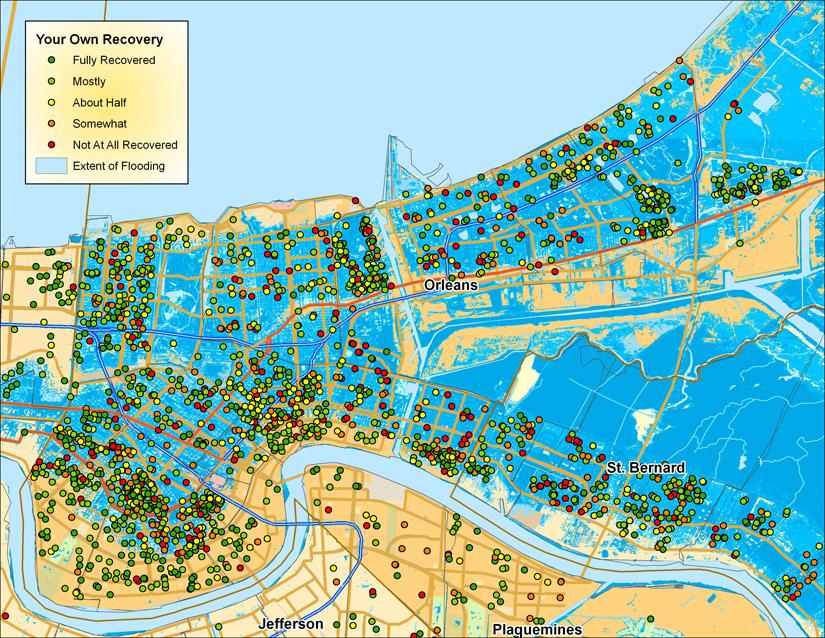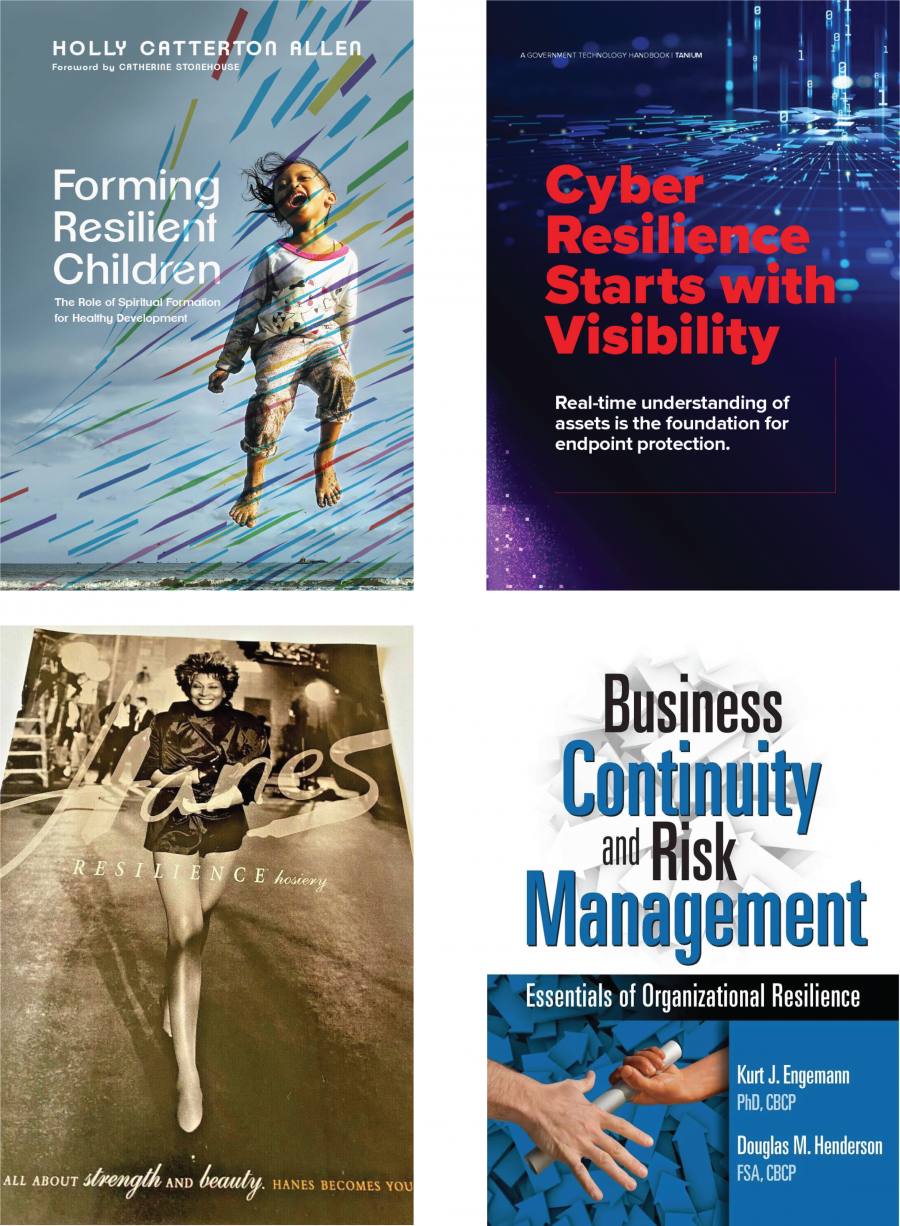
Resilience is an attractive term, but its meaning can be elusive. This lesson challenges learners with deconstructing the term—how it is used as a concept and applied as an analytical tool by ecologists, social scientists, and those who study socio-environmental (S-E) systems and their problems. As described in detail in the explainer, Sustainability, Resilience, and the Dimensions of Risk: Hazard, Exposure, Vulnerability, ecologists historically viewed resilience in the context of a return to some “natural” or “historic” state following a disturbance; but today, ecologists—particularly restoration ecologists—admit that “natural” and “historic” are relative, and sometimes, subjective terms (Oliver et al. 2023). Acknowledging that disturbances can move ecosystems into undesirable states (i.e., as understood from a human perspective [Moore and Schlinder 2022]) brings the ecological understanding of resilience closer to how social scientists conceptualize resilience. As a social process, resilience is generally defined as coping, adjusting, or transforming in response to disruptive events. It is strongly affected by social structures (e.g., policies, institutions, norms), and social systems can make large and rapid changes. Scholars like Neil Adger and Billie Turner noted decades ago that social and ecological resilience must be linked because social and environmental systems are linked (Adger et al. 2000, Turner et al. 2003).
This lesson brings together these ecological and social viewpoints, introducing the concept of socio-environmental (S-E) resilience. It challenges learners to explore all dimensions of risk in the context of resilience: hazard, exposure, and vulnerability. It is meant to provide a reasonably digestible introduction to the diverse perspectives and vast literature on resilience. Currently, the underlying concepts of S-E resilience, as well as how to measure it and how to enhance it, are evolving with ongoing debate and research on many aspects. This lesson provides detailed information in an associated PowerPoint that indicates how the research literature handles these ongoing questions, providing learners the opportunity to grapple with similar questions and role-play as a researcher in this burgeoning field of study.
- Understand resilience from both an ecological and social perspective.
- Grasp the concepts of alternate states, S-E system collapse, and S-E system reorganization.
- Explore documented examples of S-E resilience and reorganization.
- Explore ways to promote S-E resilience.
The collage to the right shows a few images that can be seen in the results of a web search of the word “resilience.” These pictures illustrate how widely resilience is used as a term, even in advertising campaigns such as those for books, cyber products, business services, and even women’s stockings (clockwise beginning with image in top left). Ask participants to spend 2 minutes jotting down notes on how they would define resilience, i.e., from their perspective or experiences. They should be told not to search online for a definition of the word.
This session can be 50 or ideally 75 minutes depending on how much time is allotted for brainstorming and discussion. Prior to the session, the instructor may wish to have the participants read one or more of the Explainers:
However, it is preferable to have them first struggle with the lesson’s concepts without reading these. The lesson’s steps assume they will not have read them. The time indicated for each step is just a rough estimate—some groups may go quickly through the steps, and others may spend more time discussing their thoughts. The intention is to show the full lesson PowerPoint at the end of the session; it provides insight into how the research literature handles some of the questions participants are asked to grapple with.
-
(3 min.) Completing the Hook. Using slide 1 in the PowerPoint, have the participants complete the Hook and retain their notes for later use.
DocumentInto to S-E Resilience Lesson Slides.pptx (17.91 MB) -
(~10 min.) Group-Work Case Study. Have the participants split up into groups of three. Show PowerPoint slide 2, which is a map of the relationship between the extent of flooding (blue areas) and self-reported recovery (colored circles) based on resident surveys conducted by Louisiana State University researchers, 5 years after the August 2005 hurricane, Katrina.
Image
Ask each group to speculate on: 1) factors that may have affected “recovery” (which implies resilience) and 2) why recovery may have varied in different flooded regions—from not recovered at all (red) to fully recovered (bright green). Each group should note at least three environmental and three social factors, again, not using any external web resources.
Have a member of each group write their factors on the board one after the other. As each group posts its responses, each new writer at the board should take care to not rewrite a response if it’s already been posted but instead just put a check mark next to that factor.
-
(10 min.) Group Work Defining Risk and Relating It to Katrina. Show slide 3 from the PowerPoint, which represents the three dimensions of risk. Alternatively, write the three words—hazard, exposure, vulnerability—on the board to the right of what was posted for step 2. Ask each group to:
Consider how they think these three words are best defined in the context of risk. They should write key words/phrases to define each of the three focal words and consider how each may relate to potentialities pre- vs. post-event. Then relate the three dimensions of risk to the Katrina factors on the board. Jot down at least two of the Katrina factors under each of the three risk dimensions that best represent that dimension.
Jot down ways in which their group thinks they could qualitatively and/or quantitatively measure vulnerability.
-
(8 min.) Sharing. Bring the groups back together and ask them to each send a member to the board to list key words/phrases for how they defined hazard, exposure, and vulnerability underneath the risk dimensions written on the board. Again, have groups do this sequentially. After all the words are up, have them brainstorm and circle on the board which risk factors they believe have the greatest potential to influence recovery. Next, have them list phrases for how they would measure each type of risk. Discuss as a whole assembly.
Note to Instructor: You are trying to get participants to think about more than just the physical hazards of an event—as if the risk from coastal flooding was ONLY associated with proximity to the size of a storm (hazard) OR only associated with their proximity to the coastline (exposure). Risk can include both exposure and hazard AND how socially vulnerable the residents are. Examples to point out, if they do not come up in discussion, include the following:
- Less vulnerable people may have more robust social connections, which can help them flee a natural hazard event, and they will more likely have the means to do so (e.g., money, transportation).
Less vulnerable people may also have insurance or funds to buy a new home and/or a place to stay during the rebuilding and recovery process.
-
(10 min.) Group Work – Ecosystem Resilience. In considering the dimensions of risk, the learners likely focused primarily on social risk because the Katrina map moved them in that direction. Have them now consider and take notes in response to these questions, then share with the whole assembly:
How might the three dimensions be related to ecological resilience? (i.e., What does vulnerability mean in the context of a population of animals or a coral reef ecosystem?) How would they measure this?
How could you bring together the ecological and social aspects in the context of resilience so that you could apply it to a specific S-E system, such as coastal New Orleans and Hurricane Katrina? How might S-E resilience be enhanced?
Note to Instructor: The second bullet poses a very difficult question and requires that participants consider the relative and sometimes subjective nature of what is desired ecologically and socially. So, there is no right answer, but rather the question pushes the participants. The slides presented in the beginning of the next step discuss this concept again in the slides.
-
(10-12 min.) Presentation. Starting at slide 4 of the PPT and continuing onward, present the theory and ideas related to S-E resilience, allowing time for discussion. Some of this presentation may go quickly depending on how insightful their earlier discussions were. Most of the slides include notes to the instructor.
-
Explainer: Sustainability, Resilience, and the Dimensions of Risk: Hazard, Exposure, Vulnerability
This brief explainer article deconstructs the term “resilience” and provides an overview of the conceptual application of the term and its use as an analytical tool by ecologists, social scientists, and those studying socio-environmental systems and their problems.
Palmer, M.A. (2023, July 20). Sustainability, Resilience, and the Dimensions of Risk: Hazard, Exposure, Vulnerability. SESYNC. https://www.sesync.org/resources/sustainability-resilience-and-dimensions-risk-hazard-exposure-vulnerability
-
Applying Resilience Thinking
The alliance of researchers at the Stockholm Resilience Centre provides a number of resources. This brochure is based on the book Principles for Building Resilience: Sustaining Ecosystem Services in Social-Ecological Systems by Biggs et al. 2015. It outlines seven concepts that are integral to considering and building resilience in socio-ecological systems.
Simonsen, S.H., Biggs, R., Schlüter, M. et al. (2015). Applying Resilience Thinking: Seven principles for building resilience in social-ecological systems. Stockholm Resilience Centre. https://www.stockholmresilience.org/download/18.10119fc11455d3c557d6928/1459560241272/SRC%20Applying%20Resilience%20final.pdf
-
Resilience Management in Social-Ecological Systems: A Working Hypothesis for a Participatory Approach
This article is useful because it not only covers the basics of the concepts and terminology, but it discusses the four-phase panarchy re-organization concept. It also places resilience in a management context, which brings some practical applications forward.
Walker, B.S., Carpenter, S., Anderies, J. et al. (2002). Resilience Management in Social-Ecological Systems: A Working Hypothesis for a Participatory Approach. Ecology and Society, 6(1): 14. http://www.consecol.org/vol6/iss1/art14/
